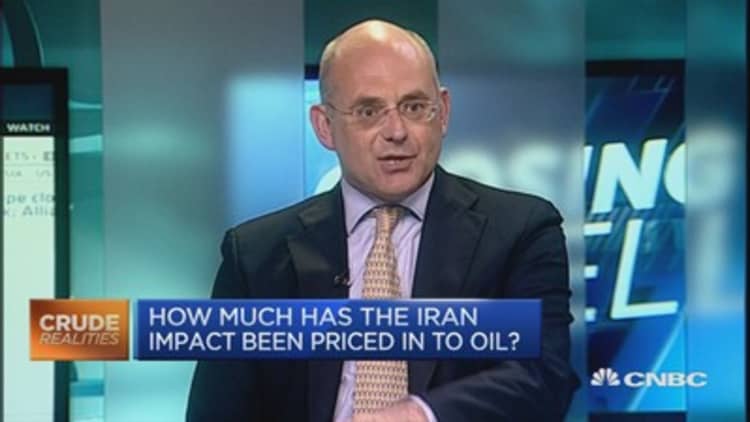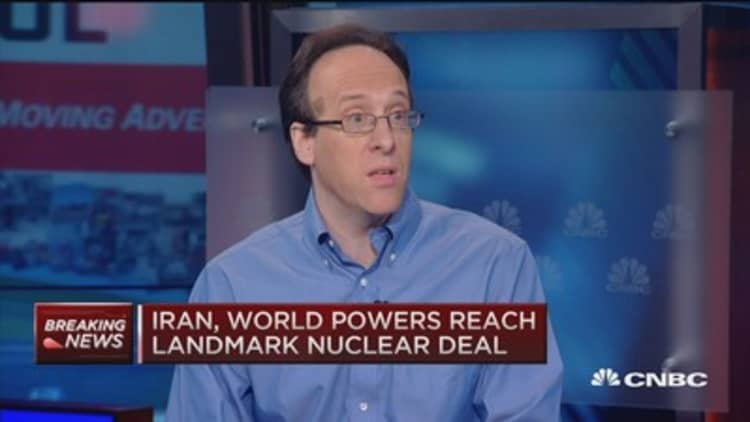
Oil prices reversed themselves and moved higher despite a historic nuclear deal that traders feared could flood the market with Iranian crude.
Under the landmark agreement, economic sanctions on Iran would be lifted in exchange for restrictions on its nuclear program. As a result, Iran will now be able to rejoin the world economic stage and export its goods – including oil.
Brent crude fell as much as 2 percent to hit $56.67 a barrel early on Tuesday in response, but later changed directions to $58.42, a gain of about 1 percent. West Texas Intermediate was up more than 1 percent at $52.86. Natural gas was down 1.2 percent.
Analysts said the swing in oil was due to the realization that Iran's crude won't be back on the market any time soon.
"There isn't going to be this great flood of pent-up supply hitting the market and it looks as if the process will be far more gradual than people expected," Neil Atkinson, head of analysis at head of analysis at Lloyd's List Intelligence, told CNBC by phone.
‘Maximize exports’
Iran signaled its intent to come back to the oil market in an article published in Shana, the oil ministry's news agency.
"We will try to maximize our crude export capacity to Europe and restore 42 to 43 percent share in the European market before the sanctions were imposed," Mohsen Qamsari, director of international affairs at National Iranian Oil Company, said in the article.
But experts are clear that Iran doesn't have great reserves of crude oil supplies to throw on the market. Tehran has stored around 25 million barrels of oil mainly consisting of condensate—an ultra-light from of crude that is "not easy to sell," according to Amrita Sen, chief oil analyst at Energy Aspects.
In addition, Iran will have to invest heavily in infrastructure as well as put attract investment, sign commercial contracts and figure out the other logistics needed with producing and exporting oil.
‘Unbalanced’ market

So what does this mean for oil prices over the next few months?
While the price movement on Tuesday wasn't dramatic, analysts said investors should look toward the price dropping in 2016.
This year has been characterized by an abundance of oil supply and lack of demand that has kept oil prices low. OPEC suggested in its "Monthly Oil Market Report" that there would be a move toward a more "balanced market" in 2016 as demand outstrips growth. But the nuclear deal could jeopardize that as it puts more oil on the market, and OPEC continues to ramp up its supply in order to gain market share.
"At a time when oil markets are oversupplied and OPEC is on this path of getting market share, it's suggesting the oil market will be unbalanced and you will see pressure on oil prices not just in six to 10 months, but in the near-to-medium-term as well," Abhishek Deshpande, oil and gas analyst at Natixis, told CNBC by phone.


